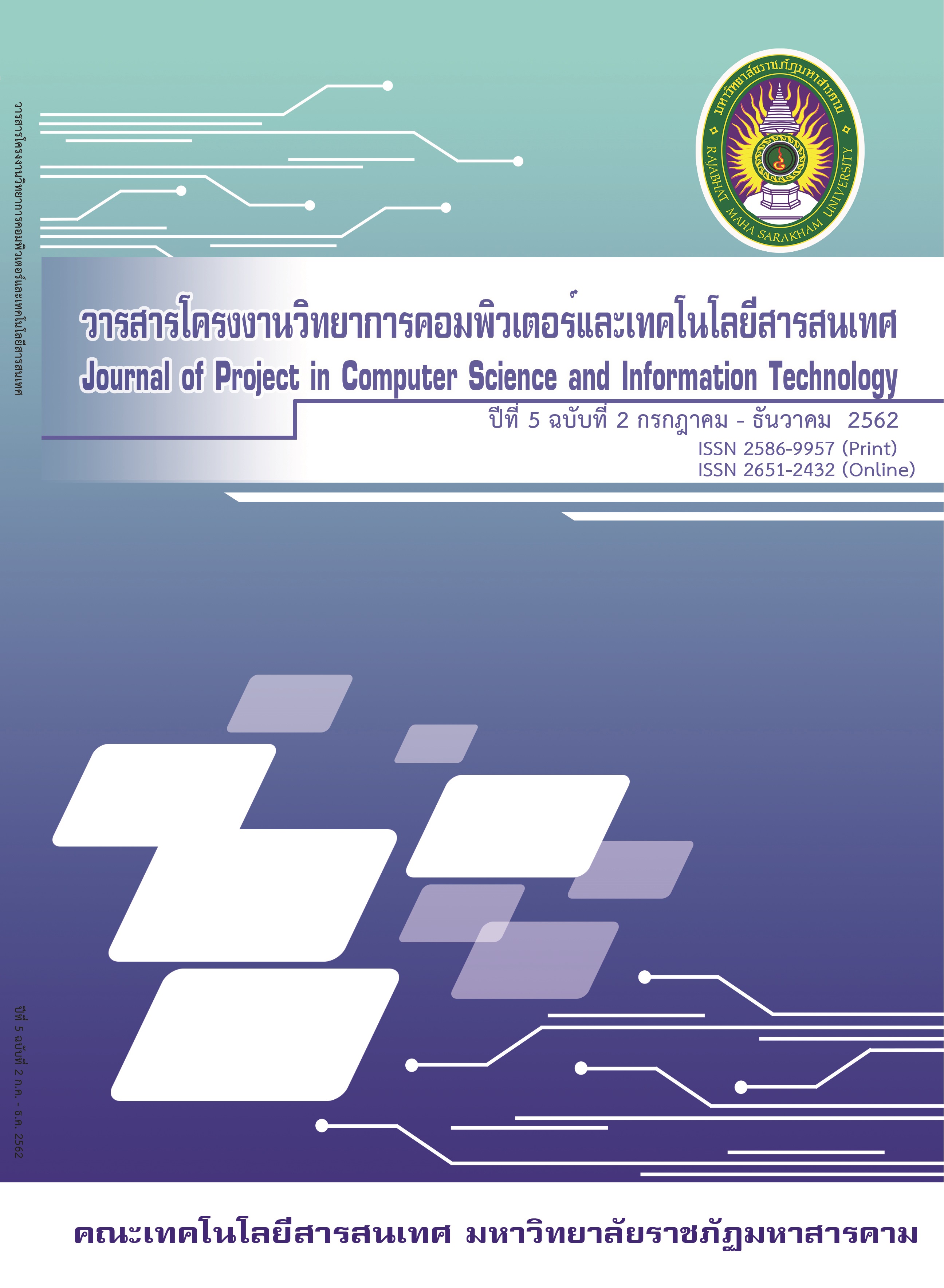ความสัมพันธ์ของความสามารถทางเทคโนโลยีกับความสามารถทางเครือข่าย และการพัฒนาผลิตภัณฑ์ใหม่
Main Article Content
บทคัดย่อ
วิจัยครั้งนี้มีวัตถุประสงค์เพื่อ 1) เพื่อศึกษาผลกระทบของความสัมพันธ์ระหว่างสมรรถนะทางเครือข่ายและความสามารถทางเทคโนโลยีของผู้ประกอบการต่อองค์กรนวัตกรรม 2) ศึกษาผลกระทบขององค์กรนวัตกรรมและผลการดำเนินงานขององค์กร กลุ่มตัวอย่างคือ ผู้ประกอบการใหม่ด้านเทคโนโลยีสารสนเทศ จำนวน 935 บริษัท โดยใช้แบบสอบถามเป็นเครื่องมือที่ใช้ในการรวบรวมข้อมูล สถิติที่ใช้ในการวิจัยคือ การวิเคราะห์การถดถอย อย่างง่ายและการถดถอยแบบพหุคูณ
ผลการวิจัยพบว่า 1) สมรรถนะทางเครือข่ายประกอบด้วยความสัมพันธ์ระหว่างงาน คุณสมบัติเฉพาะ ที่จำเป็นต่อการจัดการและคุณสมบัติทางสังคมมีผลกระทบต่อการเป็นองค์กรนวัตกรรม และความสามารถทางเทคโนโลยีของผู้ประกอบประกอบด้วยเทคโนโลยีหลัก เทคโนโลยีสนับสนุนมีผลกระทบต่อการเป็นองค์กรนวัตกรรม 2) การเป็นองค์กรนวัตกรรมมีผลกระทบต่อผลการดำเนินงานขององค์กร องค์กรนวัตกรรม (OI) มีผลกระทบต่อผลการดำเนินงานขององค์กรสามารถนำมาเขียนสมการพยากรณ์ได้ดังนี้ 0.786+ 0.754OI+ e1
Article Details
เอกสารอ้างอิง
review and guidelines for future research. In World Conference on Information
Systems and Technologies (pp. 411-421). Springer, Cham.
[2] Parida, V., Oghazi, P., & Cedergren, S. (2016). A study of how ICT capabilities can influence dynamic
capabilities. Journal of Enterprise Information Management. 29(2), 179-201.
[3] Jared, D., Oloko, M. & Orwa, G. (2015). The Relationship between Dynamic ICT Capabilities and
Competitive Adventage of Thechnical, Vocational and Entrepreneurship Traning
Institutions in Western Kenya Region. International Journal of Academic Research in Business and Social Sciences. 5,114-130.
[4] Hagedoorn, J., Roijakkers, N., & Van Kranenburg, H. (2006). Inter‐Firm R&D Networks: the
Importance of Strategic Network Capabilities for High‐Tech Partnership Formation 1.
British Journal of Management, 17(1), 39-53.
[5] Rai, A, Arikan, I, Pye, J. & Tiwana, A. (2015). Fit and misfit of plural sourcing strategies and
IT-enabled process integration capabilities: consequences of firm performance in the
U.S. electric utility industry. MIS Quarterly, 39(4), 856-885.
[6] Prem, E. (2014). Identifying international Research Cooperation Capabilities in Information and
Communication Technologies. Science and Public Policy. 41(5), 658-672.
[7] Mithas, S., Tafti, A., & Mitchell, W. (2013). How a firm's competitive environment and digital
strategic posture influence digital business strategy. MIS Quarterly, 37(2), 511-536.
[8] Petersen, K. J., Handfield, R. B., & Ragatz, G. L. (2003). A model of supplier integration into
new product development. Journal of product innovation management, 20(4), 284-299.
[9] Rauniar, Rupak & Doll, William & Rawski, Greg & Hong, Paul, (2008). Shared knowledge and
product design glitches in integrated product development, International Journal of
Production Economics, Elsevier, 114(2), 723-736.
[10] Veit, D., & Huntgeburth, J. (2014). Foundations of digital government. Leading and Managing
in the Digital Era, 158.
[11] Schoonjans, S. (2013). Modal particles: Problems in defining a category. Retrieved from
https://doi.org/10.1075/pbns.234.06sch
[12] Owolabi, Oluwarotimi & Pal, Sarmistha. (2013). Does business networking boost firms’
external financing opportunities? Evidence from Central and Eastern Europe. Applied
Financial Economics. 23. 415-432. Doi: 10.1080/09603107.2012.725930
[13] Tidd, J. & Bessant, J. (2014). Strategic innovation management. New York:John Wiley & Sons.
[14] Smith, D. (2015). Exploring Innovation. New York: McGraw-Hill Education-Europe.
[15] Battor, M., & Battor, M. (2010). The impact of customer relationship management capability
on innovation and performance advantages: testing a mediated model. Journal of
marketing management, 26(9-10), 842-857.
[16] Francis, D., & Bessant, J. (2005). Targeting innovation and implications for capability
development. Technovation, 25(3), 171-183.
[17] Kim, T. T. & Lee, G. (2013). Hospitality employee knowledge-sharing behaviors in the relationship
between goal orientations and service innovative behavior. International Journal of
Hospitality Management. 34, 324-337.
[18] Lin, H. F. (2007). Knowledge sharing and firm innovation capability: an empirical study.
International Journal of manpower, 28(3/4), 315-332.
[19] Liu, Y., & DeFrank, R. S. (2013). Self-interest and knowledge-sharing intentions: The impacts of
transformational leadership climate and HR practices. The International Journal of
Human Resource Management, 24(6), 1151-1164.


